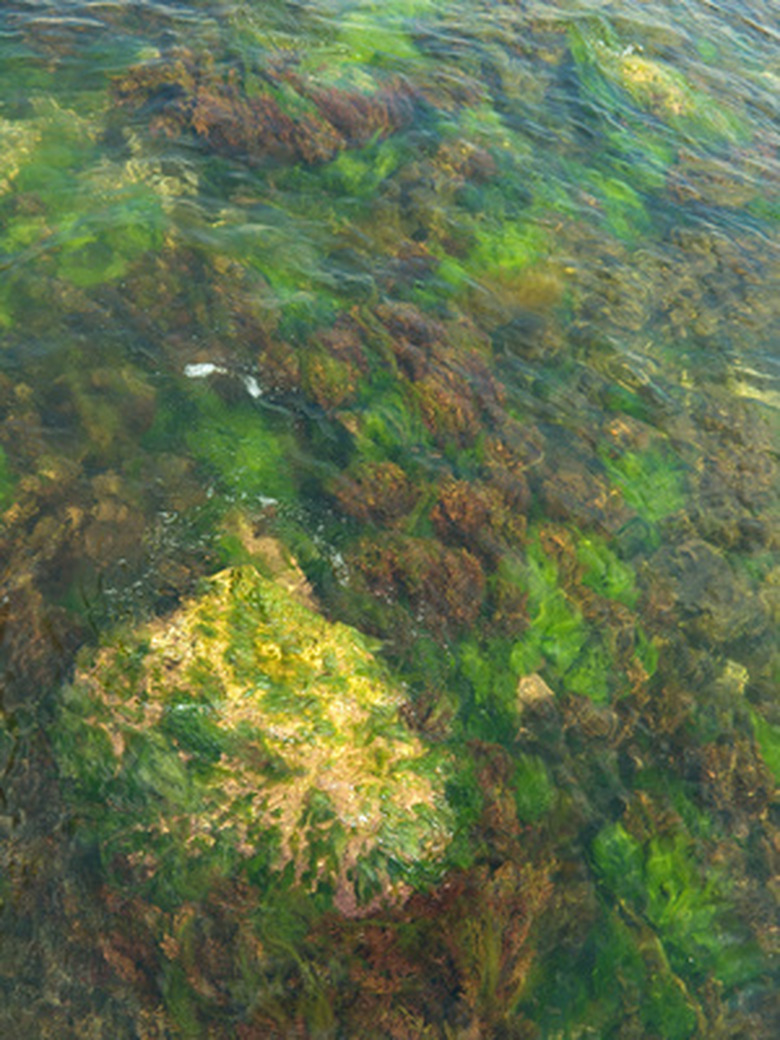Types Of Aquatic Plants And Animals In The Mississippi River
The Mississippi River is home to a variety of aquatic plants and animals in a complex, interconnected ecosystem. Aquatic plants provide food and shelter to many different species in the river, and can be as small as the single-celled algae. The Mississippi River features a range of animals, from invertebrates to fish, frogs and others.
Algae
Algae
According to the Iowa Department of Natural Resources, the Mississippi plays host to two major types of algae: green and blue-green. Green algae are the basic biological component of any healthy ecosystem; they create large colonies that can give the water a greenish cast. Blue-green algae are less desirable and are considered a nuisance algae. They're associated with stressed ecosystems and can cause unpleasant flavors in fish or kill entire populations.
Duckweed
Duckweed
This common free floating plant has a single tiny leaf and roots that dangle in the water to suck up nutrients. As indicated by its name, duckweed is an important food source for many waterfowl.
Waterlilies
Waterlilies
White waterlilies are a common site in the Mississippi River, and are composed of large, floating leaves with a leathery texture. They produce large white flowers on top of the leaves, and are rooted in the mud below.
Crayfish
Crayfish
Also called crawfish or crawdads, these crustaceans resemble small lobsters. They are primarily bottom feeders, and consume leavings from other animals, carrion and small animals. Both native and invasive crayfish live in the Mississippi River.
Catfish
Catfish
Channel catfish are a common sight in the Mississippi River. They are the most numerous type of catfish. These fish can grow to surprising sizes, and stick primarily to the river bottom. They're notable for their tendency to strike many different kinds of bait, but they should be eaten rarely due to the danger of PCB (polychlorinated biphenyl) contamination.
Leopard Frog
Leopard Frog
These spotted frogs are also called meadow frogs. They live in and around the Mississippi River. They often serve as an environmental indicator species due to their susceptibility to pollutants and contaminants. They spend most of their time along the margins of streams and other bodies of water, and eat mostly insects, arthropods and other invertebrates.
Cite This Article
MLA
Palmer, G.D.. "Types Of Aquatic Plants And Animals In The Mississippi River" sciencing.com, https://www.sciencing.com/types-of-aquatic-plants-and-animals-in-the-mississippi-river-13428551/. 21 July 2017.
APA
Palmer, G.D.. (2017, July 21). Types Of Aquatic Plants And Animals In The Mississippi River. sciencing.com. Retrieved from https://www.sciencing.com/types-of-aquatic-plants-and-animals-in-the-mississippi-river-13428551/
Chicago
Palmer, G.D.. Types Of Aquatic Plants And Animals In The Mississippi River last modified March 24, 2022. https://www.sciencing.com/types-of-aquatic-plants-and-animals-in-the-mississippi-river-13428551/
